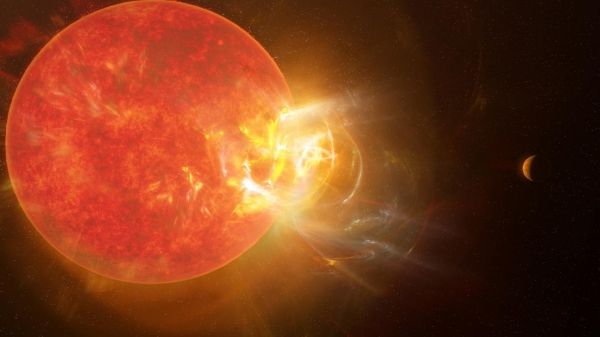Scientists have spotted the largest flare ever recorded from the sun’s nearest neighbor, the star Proxima Centauri.
The research, which appears today in The Astrophysical Journal Letters, was led by CU Boulder and could help to shape the hunt for life beyond Earth’s solar system.
CU Boulder astrophysicist Meredith MacGregor explained that Proxima Centauri is a small but mighty star. It sits just four light-years or more than 20 trillion miles from our own sun and hosts at least two planets, one of which may look something like Earth. It’s also a “red dwarf,” the name for a class of stars that are unusually petite and dim.
Proxima Centauri has roughly one-eighth the mass of our own sun. But don’t let that fool you.
In their new study, MacGregor and her colleagues observed Proxima Centauri for 40 hours using nine telescopes on the ground and in space. In the process, they got a surprise: Proxima Centauri ejected a flare, or a burst of radiation that begins near the surface of a star, that ranks as one of the most violent seen anywhere in the galaxy.
Read more at: University of Colorado Boulder
Artist's conception of the violent stellar flare from Proxima Centauri discovered by scientists in 2019 using nine telescopes across the electromagnetic spectrum, including the Atacama Large Millimeter/submillimeter Array (ALMA). Powerful flares eject from Proxima Centauri with regularity, impacting the star's planets almost daily. (Photo Credit: NRAO/S. Dagnello)


